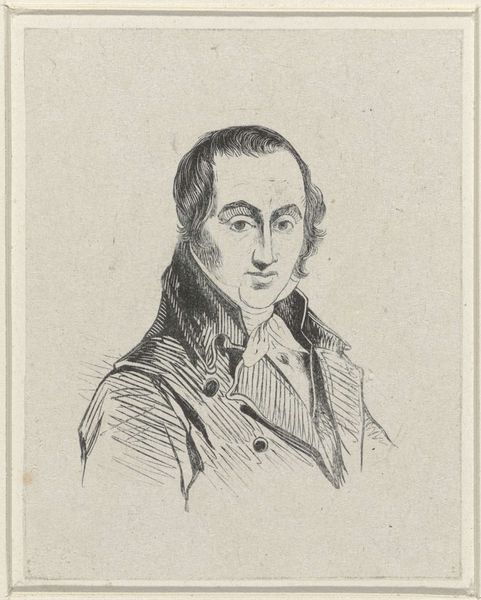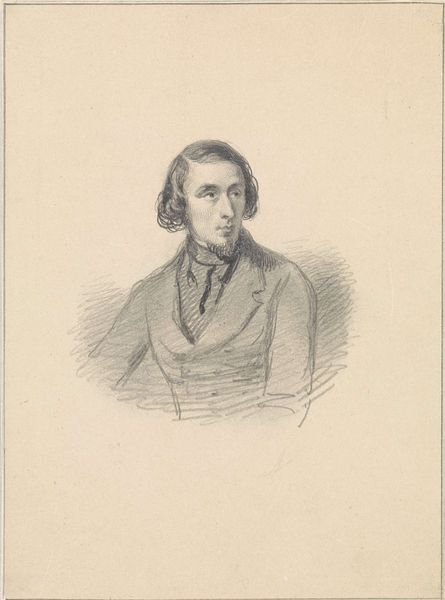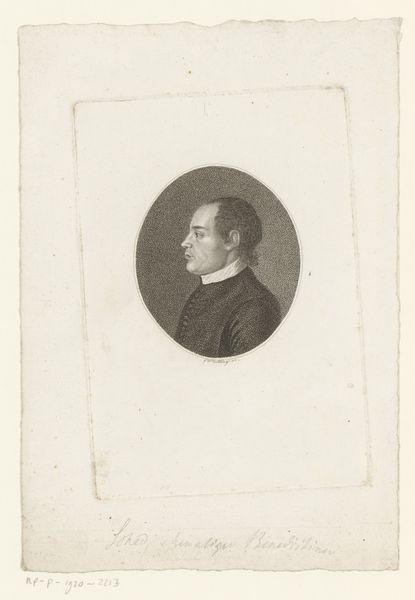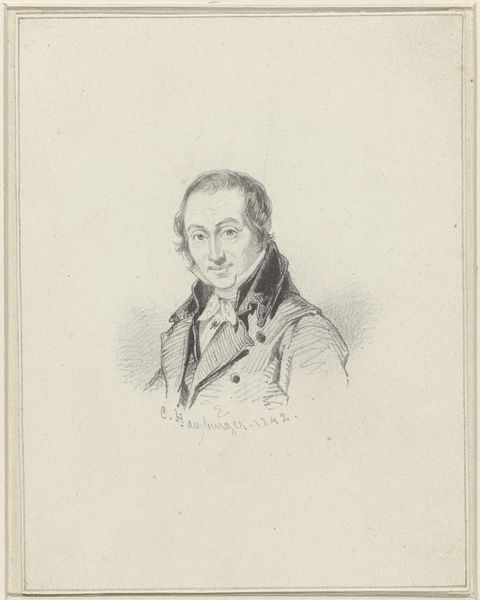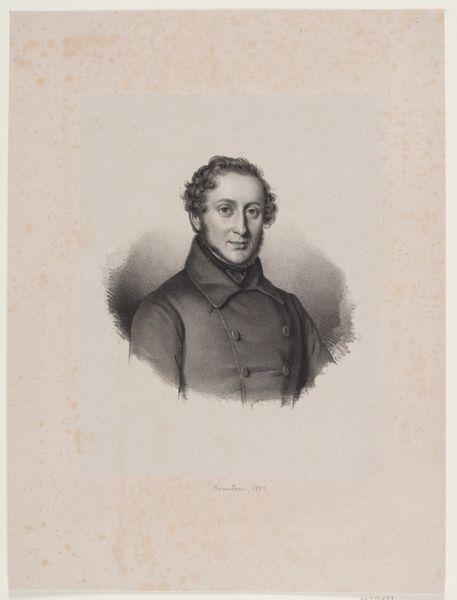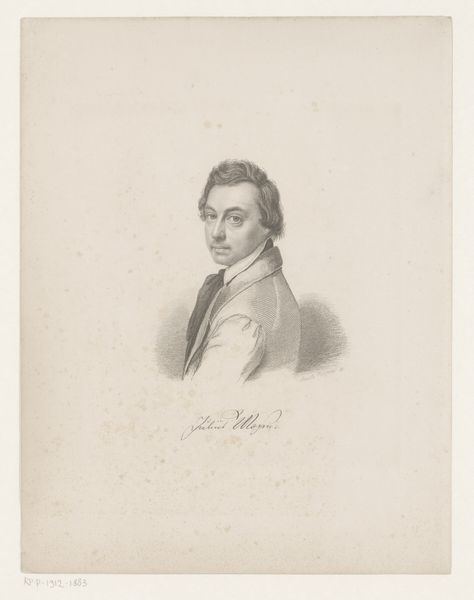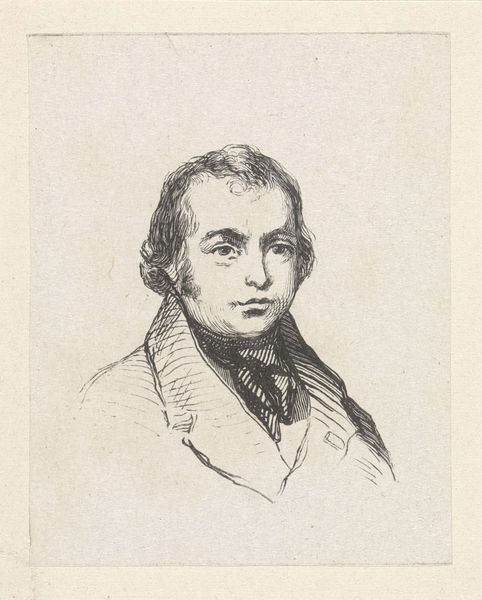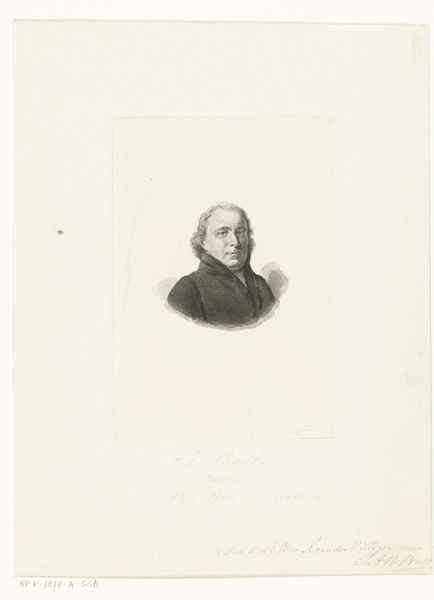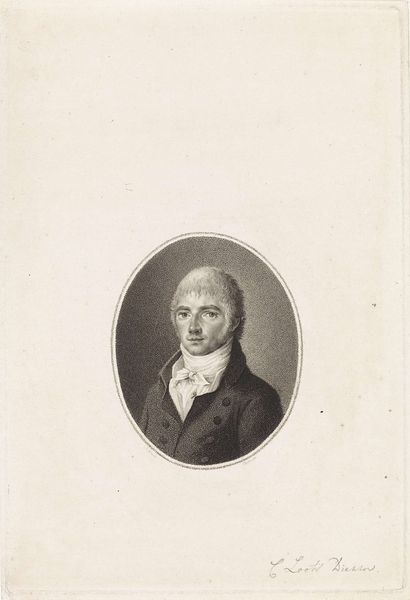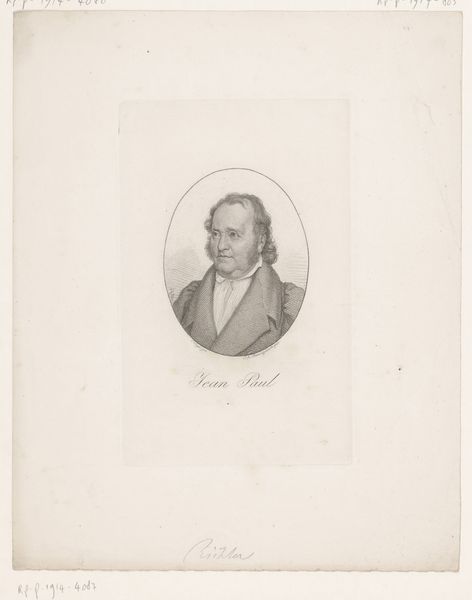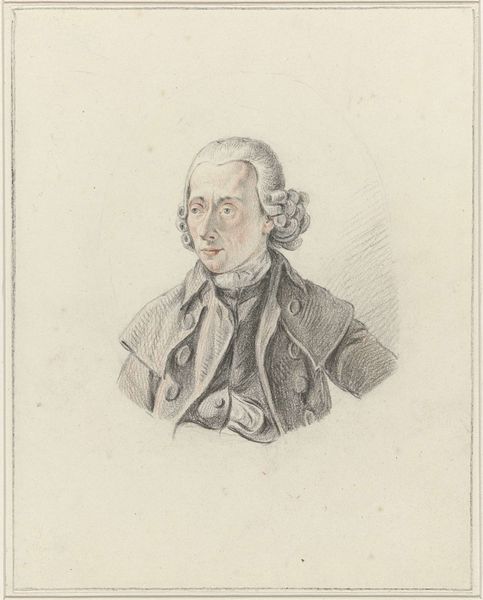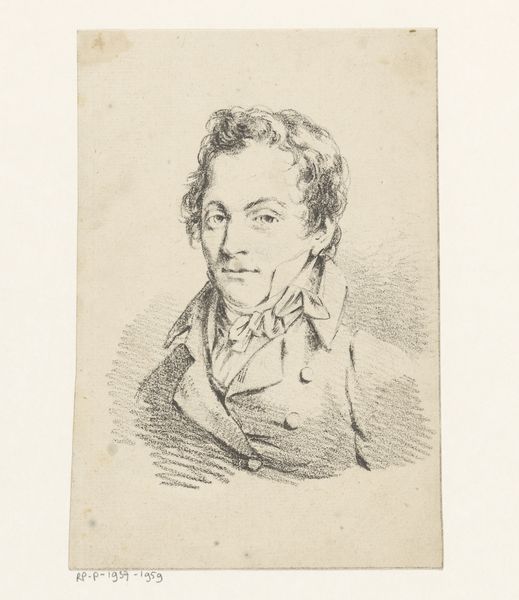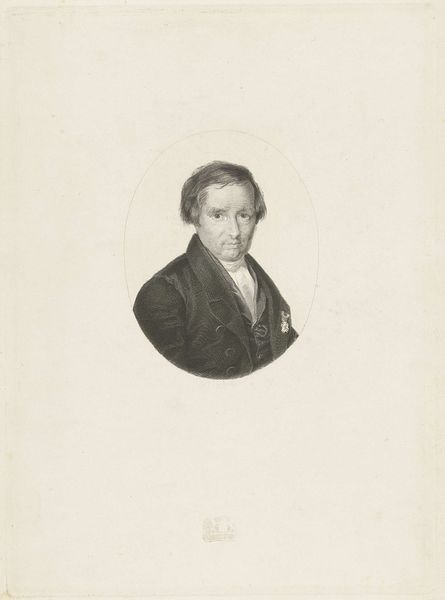
print, engraving
#
portrait
# print
#
engraving
#
realism
Dimensions: height 115 mm, width 84 mm
Copyright: Rijks Museum: Open Domain
Editor: This is Ernst Willem Jan Bagelaar’s “Portret van Hermanus van Brussel,” a print made between 1798 and 1815. The engraving style is striking; what significance do you find in the simple, almost stark, visual language? Curator: I find this image compelling. Look at the careful use of line and the implied volume; these echo Enlightenment ideals emphasizing reason and clarity. The oval frame is almost a halo. What meaning do you see in that form? Editor: Hmm, a halo… framing Van Brussel almost elevates him. It adds to the sense of him as a respectable and maybe even important figure? Curator: Precisely! The symbols of status – clothing, bearing – communicate power. The print is itself reproducible; consider what this availability signifies, then and now. Editor: It means this image could be disseminated widely, which democratizes its message, although within certain social bounds. It speaks volumes about representation in the late 18th and early 19th centuries, right? Curator: Exactly. This visual culture of portraits helped build reputations, a kind of visual networking, you might say. Now, does the direct gaze engage you emotionally? Editor: It does! It demands attention. Seeing this image I initially interpreted as rather neutral, in fact carries many loaded symbols of class and cultural power, that were perhaps more overt to viewers then. Curator: And considering those symbols helps us access cultural memory—linking the past to our present perceptions. We recognize this, but often do not see it for what it is. Editor: A lot to unpack in a seemingly simple image. Curator: Yes, a rich and evocative document from the past.
Comments
No comments
Be the first to comment and join the conversation on the ultimate creative platform.
